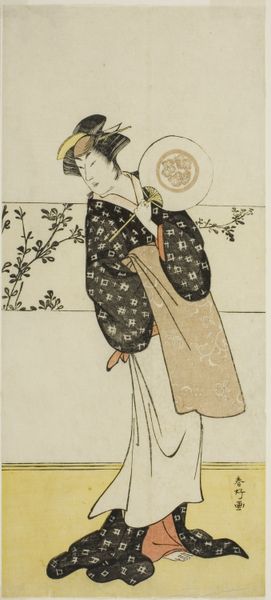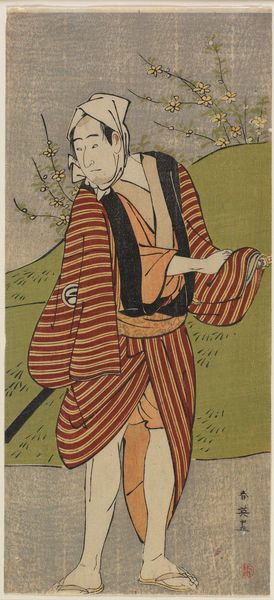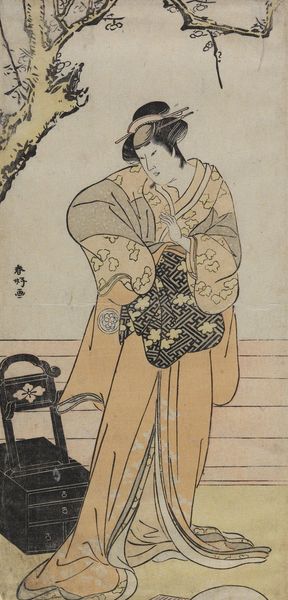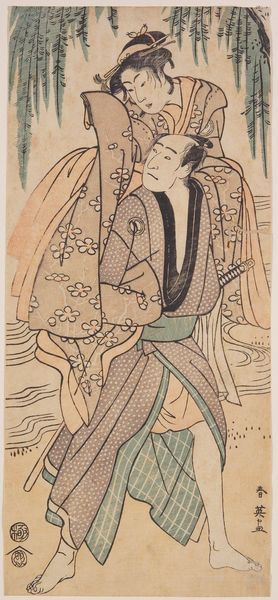
Young Woman Walking on a River Bank in Rain late 18th/early 19th century
0:00
0:00
print, ink, woodblock-print
#
ink painting
# print
#
asian-art
#
landscape
#
ukiyo-e
#
figuration
#
ink
#
woodblock-print
#
orientalism
#
genre-painting
Dimensions: 27 × 4 3/4 in.
Copyright: Public Domain
Curator: This elegant woodblock print, created in the late 18th or early 19th century by Kubo Shunman, is titled "Young Woman Walking on a River Bank in Rain." It currently resides here at the Art Institute of Chicago. Editor: It’s striking how effectively the artist conveys the sensation of rain. There’s a quiet melancholy in the composition, emphasized by the subdued palette and the solitary figure. Curator: The “ukiyo-e,” or "pictures of the floating world,” tradition to which it belongs, often depicted everyday life and entertainment. However, I see deeper symbolic elements here. The rain, perhaps representing purification or melancholy, washes over the figure, who seems burdened with unspoken thoughts. Editor: I’m curious about the printing process itself. Creating these lines, the varying opacities…it demanded incredible skill from the woodblock carvers and printers who worked from Shunman’s designs. There must have been many levels of material understanding required of artisans collaborating on the work. Curator: Consider the image of a solitary woman walking along the bank, facing away. It taps into a universal sense of loneliness, something instantly relatable across cultures and time periods. Perhaps she embodies the transient nature of existence, walking toward an uncertain future. Editor: Ukiyo-e prints became commercially available through print workshops, who mass produced designs. One copy, after it leaves the designer’s hands, must then find its purpose through use. I find it interesting to ponder how this particular artwork might have circulated, finding its niche. Curator: Her fashionable kimono and umbrella still speaks volumes. I'm captivated by the way Shunman captures a complex emotional state. A story unravelling with an enduring aesthetic power that speaks across time. Editor: I keep wondering what kinds of pigments Shunman was utilizing at this moment in history, their particular materiality, and also the ways that the original printing context would differ so dramatically from the ways it is framed and consumed today. It feels crucial to attend to those forgotten networks of production and labor.
Comments
No comments
Be the first to comment and join the conversation on the ultimate creative platform.













